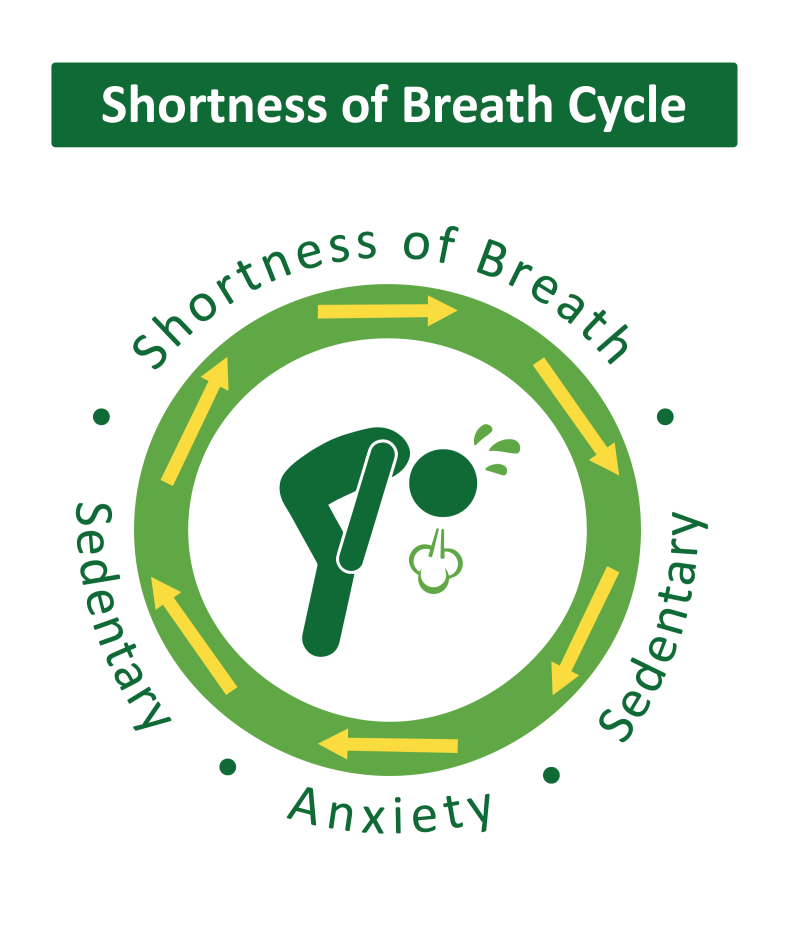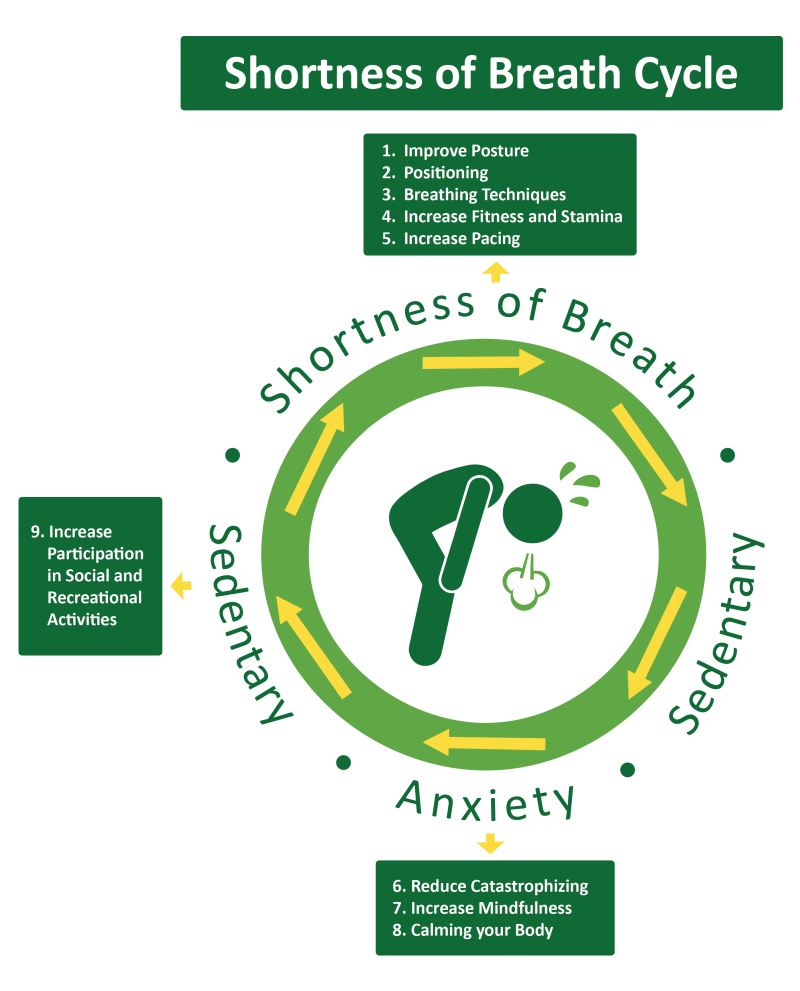Long COVID Self-Management - Anxiety and Shortness of Breath
Many people have shortness of breath after COVID-19. This feeling can be scary and can trigger anxiety. If a person didn’t have shortness of breath to begin with, anxiety can cause this to happen or make it worse. When shortness of breath gets worse, this can make a person feel even more scared and anxious.
As a result, people tend to avoid or limit activity when they are having trouble with their breathing. Some people start to feel uncomfortable being out in public, others cancel plans with friends and avoid heavy exercise. However, less exercise causes a person to become more out-of-shape, which can result in a person feeling more shortness of breath. This is known as the anxiety-shortness of breath cycle.
How to Break the Cycle
The following are suggestions on how to break the shortness of breath cycle:
Improve Your Posture
Work on improving your posture, which can affect your breathing muscles.
Be Aware of Positioning
Be aware of positioning to help ease the shortness of breath.
Breathing Techniques
Use breathing techniques to decrease shortness of breath.
Increase Exercise Tolerance, Strength and Stamina
Increase exercise tolerance, strength, and stamina. Exercise within your limits, rather than avoiding exercise entirely. Learn more about increasing exercise by visiting the Safely Returning to Activity page.
Pace Yourself
Pace yourself so that you don’t get out of breath as easily in the first place. Pacing is an “active self-management strategy whereby individuals learn to balance time spent on activity and rest for the purpose of achieving increased function and participation in meaningful activity.” Learn more about pacing by visiting the Fatigue Management page.
Manage Anxiety
- Manage anxiety by reducing negative thoughts when you experience shortness of breath. Negative thoughts (e.g., thinking about worst-case scenarios) increases anxiety, which creates more shortness of breath.
- Manage anxiety by increasing mindfulness when feeling short of breath. Practicing mindfulness means to focus one’s attention on the present moment. This will reduce negative thinking and help control breathing. Learn more about mindfulness and relaxation exercises and activities by visiting the Mindfulness and Relaxation: Exercise and Activities page.
- Manage anxiety by calming your body. Relaxing exercises can calm the body, which can help to calm the mind. Learn more about anxiety and anxiety management by visiting the Managing Stress, Anxiety, and/or Low Mood pages.
Participate in Social and Recreational Activities
Participate in social and recreational activities. Start or continue doing things you enjoy and bring you pleasure. This will help you focus on the present moment, improve your mood and manage your breathing.




